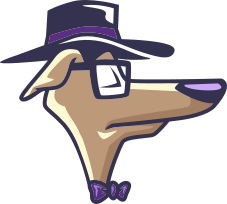My Philosophy: Purpose, Structure, and Longer, Healthier Years Together
I’ve spent years leading dogs through the interior trails of Prospect Park.
Not casually walking — leading.
Watching how they move, how they learn, how they rely on each other, and how quickly they change when the environment finally matches what they’re built for.
Over time, a simple truth became impossible to ignore:
Most problems urban dogs face come from a lack of purpose, lack of structure, and lack of consistent leadership.
Not a lack of love.
Not a lack of walks.
A lack of meaningful work.
This is the foundation of my philosophy.
1. Most Urban Dogs Are Bored — and Boredom Has a Cost
People don’t always see it because boredom often shows up as:
- restlessness
- chewing
- scavenging
- reactivity
- excess energy
- or the opposite: a slow drift into “couch pup” mode
Underneath all of that is a dog with unmet needs.
A 30-minute walk around the block isn’t solving it.
Short, repetitive outings don’t challenge their body or mind, and they don’t offer the social structure dogs rely on for emotional balance.
When needs aren’t met, healthspan declines.
I’ve watched dogs lose stamina, gain weight, tighten mentally, and detach socially — not because they’re unloved, but because the city routine simply doesn’t give them enough.
2. Purpose Turns Everything Around
Purpose is the core of my work.
A dog with a job doesn’t act like a “problem dog.”
A dog with direction doesn’t spiral into anxiety.
A dog with a mission doesn’t need to invent chaos to feel alive.
Purpose gives a dog:
- a challenge
- a destination
- something to contribute
- something to focus on
- a reason to regulate their own energy
When your dog has a mission, they stop thinking like a restless individual and start moving like part of a team.
Purpose replaces boredom faster and more reliably than any training trick or toy.
3. The Pack Is the Teacher
Dogs are social animals — not in the “playdate” sense, but in the work-together sense.
Inside a small, stable pack:
- Shy dogs stop hiding and start watching others.
- Sensitive dogs borrow confidence from calmer dogs.
- High-energy dogs settle into the rhythm of the group.
- Older dogs regain interest and presence.
I’ve seen it dozens of times:
Cadpig learning to enter the lake by watching others.
Taiga rediscovering vitality at twelve years old.
Spats channeling compulsive scavenging into focused trail movement.
These changes don’t happen because I “train” them into existence.
They happen because the pack moves with purpose, and dogs naturally sync to that.
No classroom matches that power.
4. Consistency Builds Trust — and Trust Builds Confidence
Dogs don’t thrive under a revolving door of strangers.
Every time a dog is handed to a new walker, their world resets — new voice, new expectations, new boundaries, new energy.
This is what I call The Wag Damage.
It quietly erodes trust.
It makes dogs uncertain.
It creates insecurity that owners often misinterpret as misbehavior.
My work fixes that by doing the opposite:
- One Ranger.
- One group.
- One relationship that deepens over time.
When dogs know who’s leading and what to expect, they stop bracing and start participating.
This is the real source of confidence.
5. Meaningful Movement Builds Healthspan
Every mission is built around real work:
- 90 to 120+ minutes
- 4 to 7+ miles
- climbs, descents, uneven terrain
- scent-rich stretches
- water crossings
- long rhythmic pacing
The goal isn’t to tire dogs out.
The goal is to strengthen them:
- joints
- heart
- stamina
- coordination
- emotional regulation
The physical changes are noticeable.
But the true benefit is long-term: more years where your dog feels strong, engaged, and capable.
That’s healthspan.
6. My Approach as the Pack Ranger
I don’t walk dogs.
I lead missions.
That distinction comes from how I work:
- I read the group constantly.
- I adjust pace, space, and terrain in real time.
- I pay attention to posture, breathing, micro-interactions, and thresholds.
- I match each dog to the right group and the right rhythm.
- I maintain consistency so learning can take root.
This isn’t a formula.
It’s observation, experience, and leadership.
I take responsibility for the group because the dogs expect me to — and they relax when I do.
7. What I Want for Every Dog
I want dogs to feel:
- useful
- confident
- steady
- understood
- part of something
- physically capable
- emotionally regulated
A dog who feels like this is easier to live with, happier at home, and healthier for longer.
Everything I do — every route, every group, every mission — is built to give dogs what the city takes away: purpose, structure, and relationship.
That’s my philosophy.
Simple. Field-tested. Proven on the trails every day.

